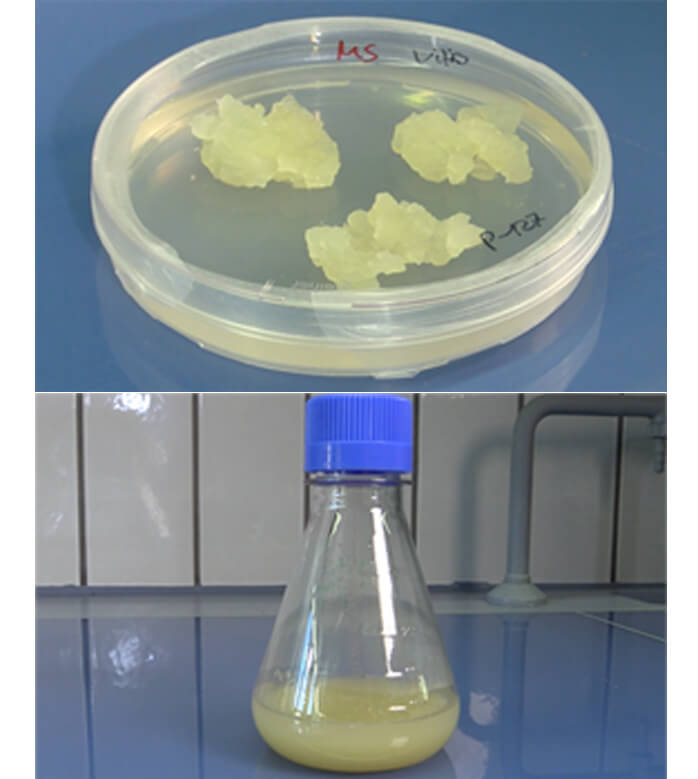Suspension culture is a tissue culture system for culturing single cells and small cell clusters in a constantly agitated or shaken liquid medium, which is used to culture non-adherent dependent cells. Generally speaking, the complete suspension culture process consists of four parts: callus induction, subculture, single cell isolation and suspension culture.
Compared with solid medium, suspension culture has many advantages, it can expand the contact surface between cells and culture medium to improve nutrition supply, it also avoids harmful substances produced by cell metabolism from harming cells themselves.
Suspension culture is a bioengineering technology that has been widely used in cytology, molecular biology and genetics research, it will have great application prospects in many industries.
Principle
During suspension culture, the conical flask continuously rotates and vibrates, from which, it can make the cells divided on the callus free ceaselessly. Through suspension culture, cells can continuously proliferate to form a high-density cell population, which is good for large scale cultivation.
Procedures
- The leaves of 1-month-old delicate plants were cut into 1-2 mm and cultured in callus proliferation medium [Murashige and Skoog (MS) medium containing 1mg/L 2,4-Dichlorophenoxyacetic acid (2,4-D) and 0.2mg/L 6-benzyladenine (6-BA) ] for 14 days to get tender callus. Callus is subcultured repeatedly to make the callus continuously proliferate.
- Select light colored callus with loose appearance, fast growth and strong embryogenesis ability, transfer them from the callus proliferation medium to the conical flask containing 60 ml liquid medium [ Murashige and Skoog (MS) medium containing 1 mg/L 2,4-Dichlorophenoxyacetic acid (2,4-D) ]. Flame the neck of conical flask, cover the mouth of the flask with a piece of parafilm.
- Culture the conical flask in a shaker incubator (120 rpm/min) in the dark to get a large number of single cell or cell mass.
- 5 days later, use a germ-free syringe or pipette to absorb a certain amount of suspension culture containing single cells and small cell clusters, and then transferred to the culture bottle containing fresh medium for further culture. In the meantime, eliminate some large tissue lumps and brown necrotic tissues.
- At the next subculture, repeat the previous steps, after 3-4 subcultures, the suspension culture system has been established and the suspension is rich in active growth cells.
 Figure 2. Suspension culture (Maschke R.; et al. 2020)
Figure 2. Suspension culture (Maschke R.; et al. 2020)
Reference
- Maschke R.; et al. Interpreting SFR vario online data gathered in plant cell suspension culture: characterization of plant cell lines for successful production processes. PreSens Publications. 2020.
For research or industrial raw materials, not for personal medical use!
 Figure 2. Suspension culture (Maschke R.; et al. 2020)
Figure 2. Suspension culture (Maschke R.; et al. 2020)